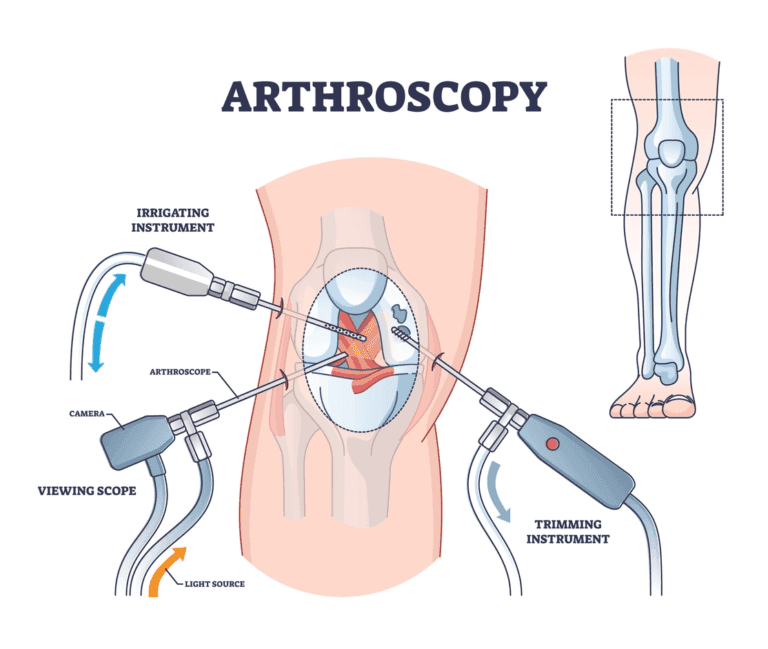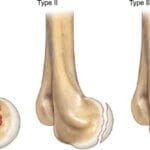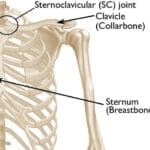Arthroscopy is a surgical technique employed by orthopaedic surgeons to diagnose and treat joint problems. Derived from the Greek words “arthro” (joint) and “skopein” (to look), arthroscopy literally means “to look within the joint.”
What is Arthroscopy?
Arthroscopy involves making a small incision in the patient’s skin and inserting pencil-sized instruments equipped with a lens and lighting system to illuminate and magnify the structures inside the joint. A camera attached to the arthroscope projects the image onto a video monitor, allowing the surgeon to see the joint’s interior without making large incisions.
When is Arthroscopy Used?
Arthroscopy can diagnose and treat a variety of conditions affecting the bones, cartilage, ligaments, muscles, and tendons. Commonly treated conditions include:
- Inflammation: Such as synovitis, affecting the knee, shoulder, elbow, wrist, and ankle joints.
- Acute or Chronic Injuries: Including rotator cuff tears, shoulder impingement, recurrent shoulder dislocations, meniscal tears in the knee, chondromalacia, ACL tears, carpal tunnel syndrome, and loose bodies of bone or cartilage.
Common Arthroscopic Procedures
Procedures performed using arthroscopy include:
- Rotator Cuff Repair
- Meniscus Repair or Resection
- ACL Reconstruction
- Synovium Removal
- Carpal Tunnel Release
- Ligament Repairs
- Removal of Loose Bone or Cartilage
These procedures can be performed on joints such as the knee, shoulder, elbow, ankle, hip, and wrist.
How is Arthroscopy Performed?
Arthroscopic surgery is typically done under general, spinal, or local anesthesia in a hospital or outpatient surgical suite. The surgeon makes a small incision to insert the arthroscope and may make additional incisions to insert other instruments. Corrective surgery is carried out using specially designed tools through these small incisions.
Advantages and Recovery
Arthroscopic surgery offers several benefits over traditional open surgery, including smaller incisions, reduced pain, and faster recovery times. Most patients undergo arthroscopic surgery as outpatients and return home the same day. The small puncture wounds heal within a few days, but full recovery of the joint can take several weeks. A tailored rehabilitation program may be recommended to speed recovery and ensure optimal joint function.
Potential Complications
Although complications are rare, they can occur. Possible risks include infection, deep vein thrombosis (DVT), excessive swelling or bleeding, and damage to blood vessels or nerves. However, these complications are uncommon, occurring in less than 1% of all arthroscopic procedures.
Arthroscopy is a valuable tool for both diagnosing and treating joint issues, offering a less invasive alternative to open surgery with generally quicker recovery times. Whether you’re an athlete or dealing with chronic joint pain, arthroscopy could be a viable option for effective treatment and recovery.






